Franco Ricciardiello
From its birth one year ago and until today, Solarpunk Italia home page has presented itself to the public with a splendid, evocative work by Artur Rosa, “The craters of Lyra 9”; the second image, the smaller that accompanies our Manifesto, is also a work of the same hand: a detail of the touching “Colony 7”. Artur Rosa is an artist from Aveiro, Portugal, who despite the strong Sense of Wonder that his works inspire, defines himself as a “hobbyist” on the ArtStation page where his works are displayed, or on the Deviantart page. With this short interview we take our leave of him, and at the same time we intend to thank him and learn more about his art.
Hello Artur, thank you for giving your magnificent artworks to Solarpunk Italia and our followers. Can you tell us something about yourself?
Artur: Hello Franco. Thank you for the honour of being chosen for your website. I’m 57 years old, I was born and live in Portugal, by the sea. Making images is just a hobby for me, but also somewhat of a passion. My day job has nothing to do with imagery. I work in an IT department of a big multinational corporation.
Do you paint exclusively in computer graphics? When do you prefer to work? During the day, at night, or whenever you have free time?
Artur: Currently, yes, I only create images on the computer. When I was around 20 or so I also did some images with pencil. I even participated in a collective exhibition at that time.
During the day I’m at my job, so I have no chance of doing anything else. It’s only at night, but mostly during the weekends, that I play around with images. Most of the time I don’t even produce anything, I just play around, learn some new techniques, and experiment with some tricks.
When we contacted you, at the end of 2020, we had considered almost a hundred artists, with gorgeous pictures; however, it seemed to us that in your case the entire complex of your work possessed extraordinary points of contact with the solarpunk imaginary. Have you ever heard of this literary genre before, which after all originated in Brazil, a Portuguese-speaking country?
Artur: Oh wow, I’m amazed. I didn’t know you had considered so many people. I’m even more honored now, thank you! To be honest, no, I hadn’t read about solarpunk before. I just like to imagine that Humankind will learn to live in peace with Nature. That our constructs will be beautiful instead of giant cubes of glass and metal, and that we will not hurt the planet. That we will reach the stars and live happily on other planets. That we will not have dystopias. I like to think we may have utopias, but sometimes I’m more realistic and simply hope for balance. These are just some of the thoughts behind what I do. If they resonate with solarpunk, that’s just a happy coincidence.
Your art has a truly professional look, so we read with amazement on your Deviantart page that you do not consider yourself an artist, that you do not know exactly what art is but that you have a feeling that it is more than what you do. For my part, I admit to having strong feelings, albeit difficult to define in words, when I look at a gallery of your works. It is as if they were speaking directly to the subconscious: an effect that I have also experienced with the work of other graphic artists, it is true, but in your case it has the same flavour as James Ballard’s science fiction stories of the 60s and 70s. Have you ever read Ballard? Are you a reader, or even a science fiction fan?
Artur: Regarding that statement that I don’t consider myself an artist, yes, that’s true. I think the word “artist” is overused and abused. I hear people all the time claiming to be artists and that unnerves me. For example, I don’t consider an actor or a singer to be an artist – they are just performing what someone else created. They are performers and if there is an artist involved, that is the writer or composer because he was the one that created something.
The word “artist” should be reserved for extraordinary people. If I consider myself an artist, then what was Michelangelo or Leonardo da Vinci, for example? Gods?… There must be a sense of proportion. If they are artists, I cannot consider myself an artist, that would be arrogant of me.
People often mistake “artisan” with “artist”. I think I’m probably an artisan, but not an artist. And the same applies to 99.9% of the people that claim to be artists, in my opinion.
Yes, I’m an avid reader of science fiction and I love it. I read thousands of books, and continue reading, although now I don’t have that much time. My favorites are still the classics, like Asimov, Clarke, Heinlein, Simak, van Vogt, but recently I’ve come across many new independent writers that digital editions have made possible. I’ve been reading in my e-book reader for several years and one of the very pleasant recent surprises was Nathan van Coops, who has incredible time-travel stories and concepts.
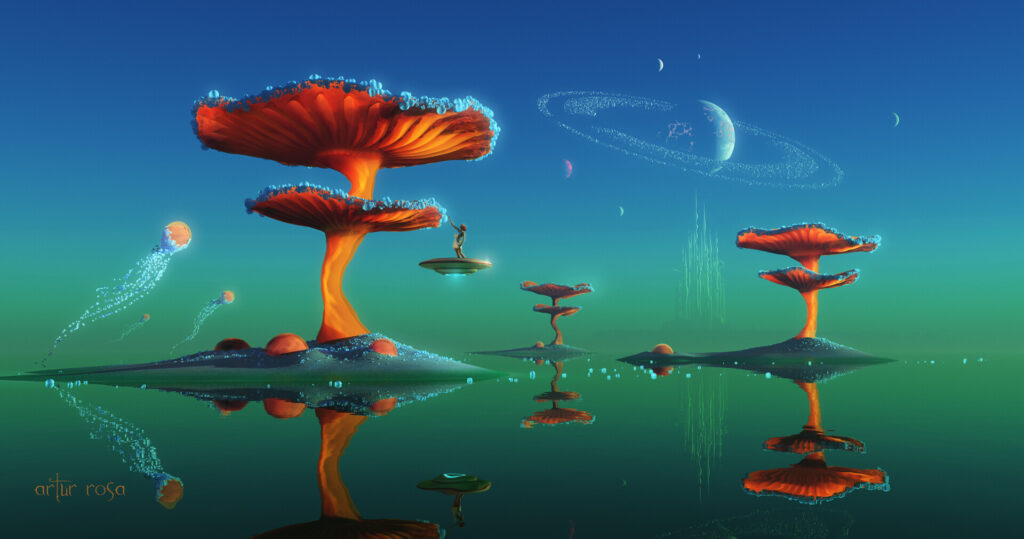
It seems to me that science fiction illustration tends to achieve two effects: to “hit hard” with images of strong impact, violence, sensational, a bit like dystopian literature, horror, splatter do; or it perfectly captures the Sense of Wonder of classic science fiction, I mean some magazine covers of the 50s and 60s, such as Fantastic and If that broke away from the sexist iconography of the pulp. However, many of your works go further: a dimension that detaches itself from Sense of Wonder and approaches Utopia. This tension is never explicit, but certain works like “Red Shores of the Second Moon“, “Caves of Tau Ceti“, “Three Degrees of Freedom” and “Seclusion in Green and Amber” in my opinion represent an “Utopian Sense of Wonder”.
Artur: Thank you, I see you know my work very well. I think you interpreted my images as I envisioned them. Like I said before, yes, I like to think we could be living in an Utopia in the future but I’m also realistic and know that’s probably not going to happen because that’s not in Human nature. At least not for the foreseeable future. But at least we may reach balance, and that’s not too bad. And that could be the tension you perceive – because balance implies swinging between two states and that implies some tension.
Human figure is rarely the protagonist in your images: most of the time it has minimal dimensions, as if it were a sort of unit of measurement of the immeasurable dimensions of the landscape. I also have the impression that your men and women perform the function that in literature is defined as “point of view”: not a protagonist of the image, but the perspective through which you experience the events of the story. For example, the beautiful sequence of “The reading place” has nature as its protagonist, not the child reading a book.
Artur: Yes, you are right. For me, the human figure is an accessory to a place. The place is the important element, the human figure may or may not be present, and that is almost irrelevant. Humans have a brief presence, they are just a bip in a place that has its own vast scale of time. A human is to a place what a fly is to a human – just a meaningless and brief insect that flies by and it’s gone in a moment. I’m not only talking about natural places, I’m also talking about man-built places.
So, yes, most of the time the humans I use in my images are a bit like “extras” in a movie, those people in the background that are there just to provide some perspective and ambience. They are there to convey a sense of scale and to allow the viewers to identify themselves better with the place, to provide a point of view, as you put it.
But not always: in many of my images, humans do play an important or symbolic role, even though they may be physically small. Interestingly, the children in my images usually play a more important role than the adults. When I make images with children I view the place through their eyes and that inspires me because children don’t have the self-imposed restrictions that adults have.
Thank you for the interview, and for the wonderful emotions you give us. Solarpunk Italia is happy to have found a “fellow traveler” in you. We will continue to follow your work.
Artur: Thank you for having me, it was quite an honour!
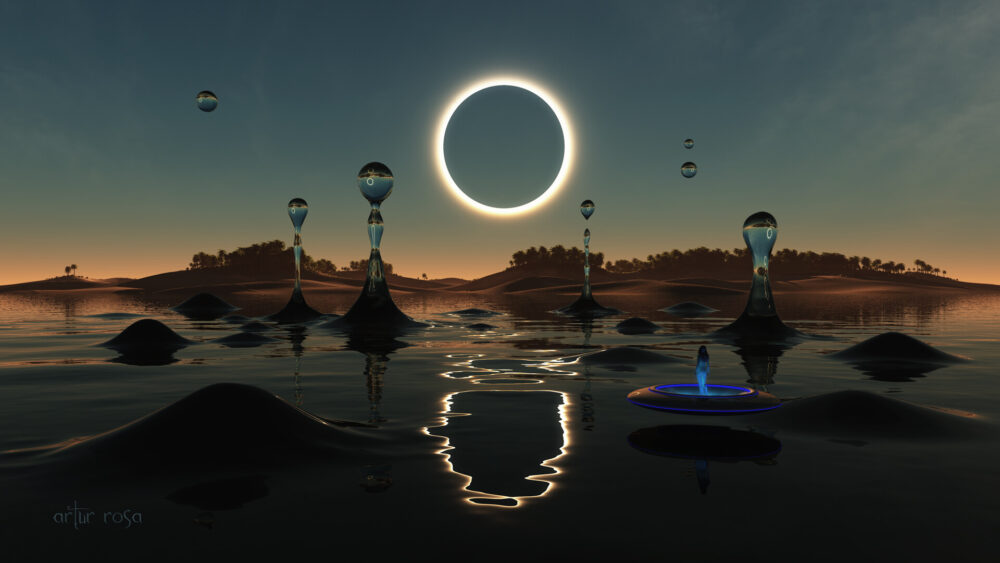

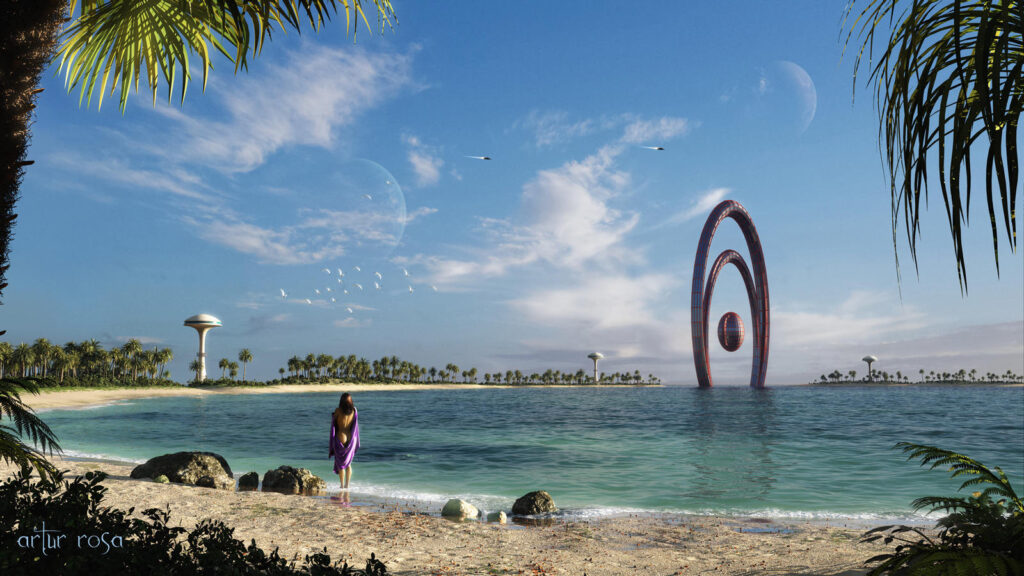
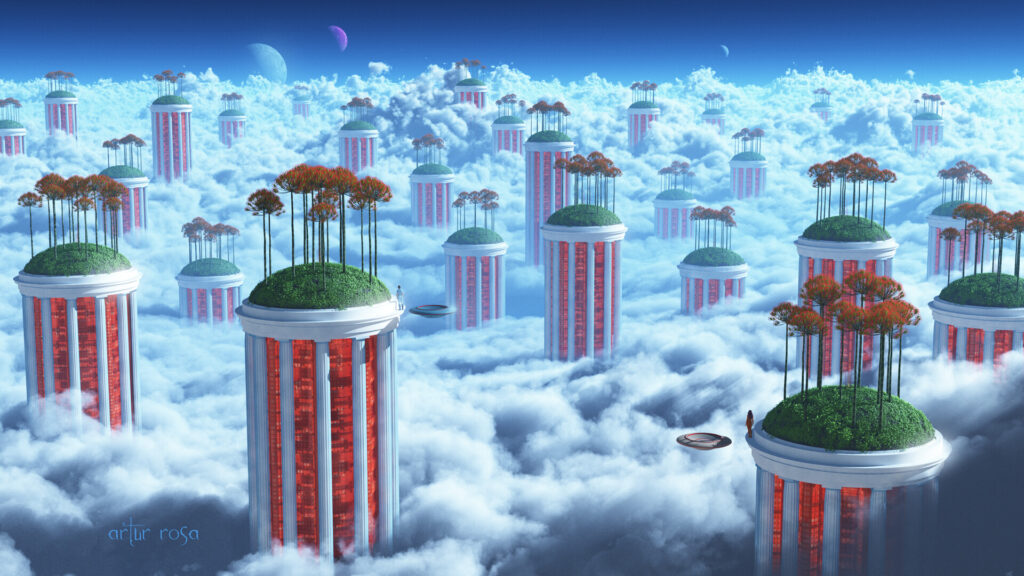
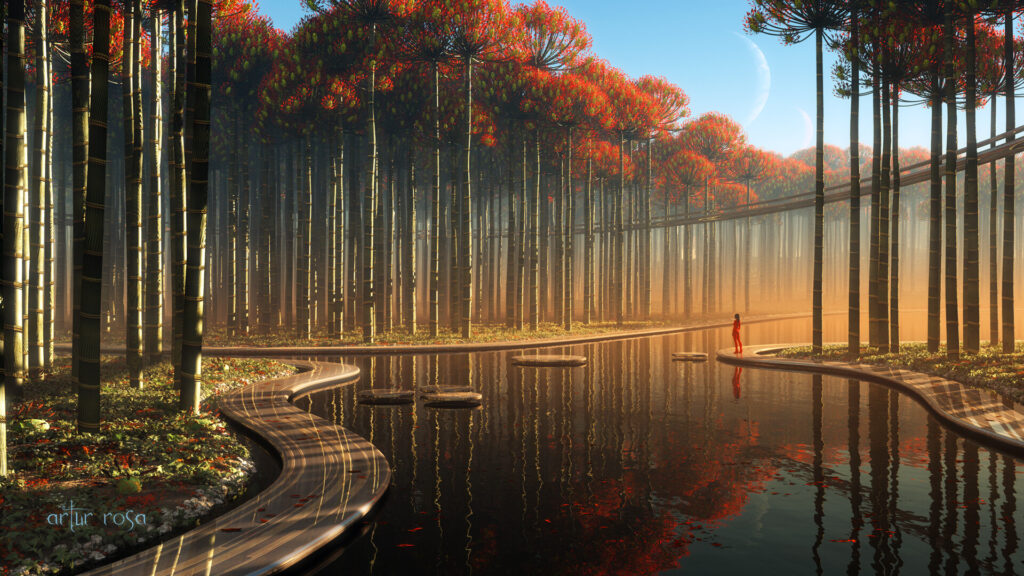

Comments are closed